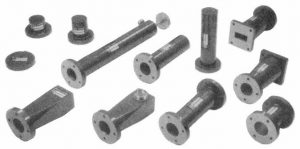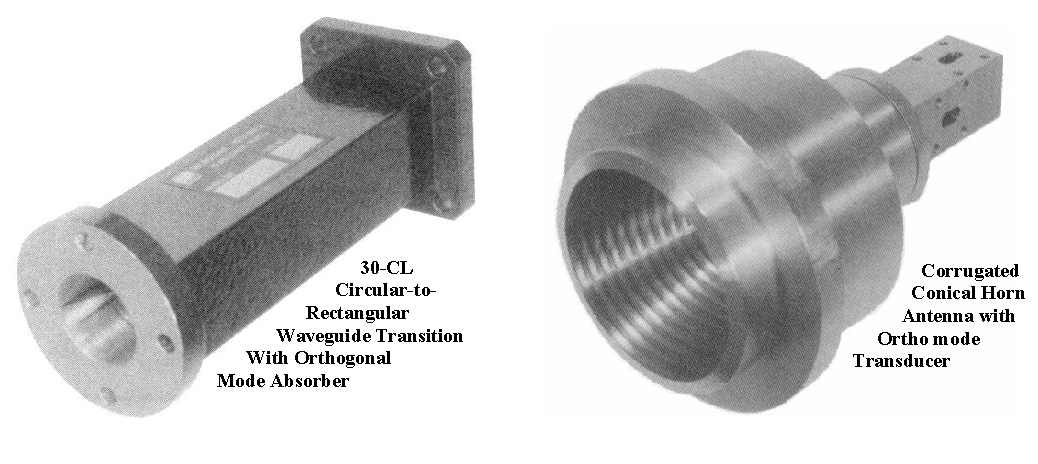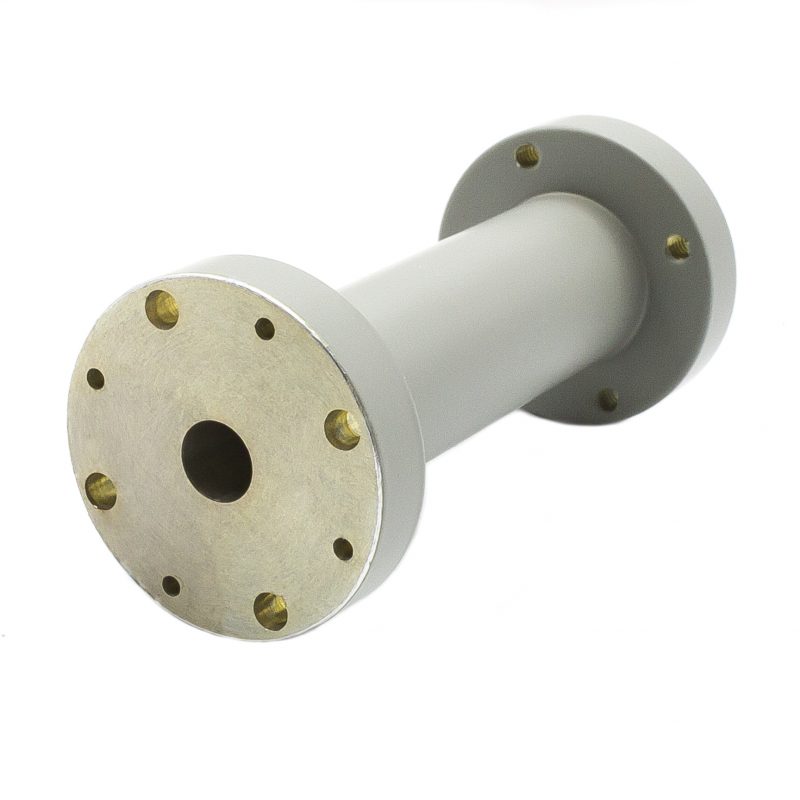Circular Waveguide
- Category: Waveguide
 M.E.C.’s circular waveguide products are used for the transmission and control of circular waveguide TE11 dominant mode energy and for the conversion of rectangular waveguide TE10 dominant mode to circular waveguide TE11 energy. Additionally, certain components are used to establish or convert to dual linear and circular polarization. All are available in frequency ranges from 2 to 60 GHz. (Although the circular electric TE01 mode has less transmission loss and is desirable for long straight runs, it is not often used due to its inherent susceptibility to mode conversion and difficulty in launching the mode efficiently). For TE11 operation, the useful range of diameters, D, is 0.7lo<D<0.97lo where lo is the free space wavelength. This is from about 20% above TE11 cutoff up to TE21 cutoff. Note that the TM01 cutoff diameter is 0.77lo, but this is not excited in the components described. Both standard WRC and non-standard diameters are available. Characteristic of all units are their high efficiency, low loss, and excellent match.
M.E.C.’s circular waveguide products are used for the transmission and control of circular waveguide TE11 dominant mode energy and for the conversion of rectangular waveguide TE10 dominant mode to circular waveguide TE11 energy. Additionally, certain components are used to establish or convert to dual linear and circular polarization. All are available in frequency ranges from 2 to 60 GHz. (Although the circular electric TE01 mode has less transmission loss and is desirable for long straight runs, it is not often used due to its inherent susceptibility to mode conversion and difficulty in launching the mode efficiently). For TE11 operation, the useful range of diameters, D, is 0.7lo<D<0.97lo where lo is the free space wavelength. This is from about 20% above TE11 cutoff up to TE21 cutoff. Note that the TM01 cutoff diameter is 0.77lo, but this is not excited in the components described. Both standard WRC and non-standard diameters are available. Characteristic of all units are their high efficiency, low loss, and excellent match.
Fundamental to most systems is the rectangular-to-circular waveguide precision tapered transition. This may be incorporated with a coax-to- rectangular waveguide adapter to provide a mode-free, full band circular waveguide-to-coax adapter with excellent VSWR. Other standard circular waveguide components offered include straight sections, fixed and sliding terminations, short circuits, conical horn antennas, polarizers, orthomode transducers, and mode absorbers. Polarizers are reciprocal devices used to convert incident TE11 modes in circular waveguide. More specialized componentry such as corrugated horn antennas which feature low (40dB) side lobes, equal E and H plane beamwidths, and less beamwidth variation with frequency are also available.
Total in-house production capability coupled with circular waveguide expertise enables M.E.C. to offer integrated sub-assemblies for specialized customer requirements with quick turn-around time (e.g. a conical horn antenna with circular polarizer and orthomode transducer). The principal advantages of an integrated sub-assembly are that performance can be optimized for the application and interactions between discrete components can be eliminated. Other advantages include size and weight reduction.
- Research / Development / Engineering
- Integrated Sub-Systems
- Polarization Diversity


Order and Sales Information
(1) Please contact M.E.C. with your specific requirements. All customer designs are welcome.

